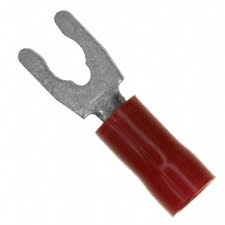It’s the time of year for saving money!
 As you might expect, after being a reviewer for over thirty years, I have had and still do have a closetful (literally) of cable. Several pieces date from 1978, before I even started writing about audio! So when, in all those metered lengths of nearly everything under the sun, I couldn’t find a pair of Goertz speaker cables that I wanted to use, only because both ends were terminated with banana plugs, I started thinking about how many different types of speaker cable terminations we have to deal with…all of which have their issues.
As you might expect, after being a reviewer for over thirty years, I have had and still do have a closetful (literally) of cable. Several pieces date from 1978, before I even started writing about audio! So when, in all those metered lengths of nearly everything under the sun, I couldn’t find a pair of Goertz speaker cables that I wanted to use, only because both ends were terminated with banana plugs, I started thinking about how many different types of speaker cable terminations we have to deal with…all of which have their issues.
Some audiophiles prefer no termination hardware and some more extreme types even solder bare wire directly to their amplifier’s outputs, eliminating bot the termination hardware and the amps’ speaker binding posts entirely. Does this make an audible difference?
At the 2009 RMAF Andrew Jones of TAD did an A/B comparing a set of cheap five-way binding posts with a premium set. In matched-level A/B tests the sonic limitations imposed by the inferior binding posts were clearly audible.
Let’s look at the pros and cons of each speaker wire termination scheme…First there’s pressure-crimped bare wire. It has the advantage of no additional hardware and no solder joints to go bad. But bare wire will oxidize over time and can easily come loose unless soldered in place, which can be messy and impossible with some amps and speakers.
Probably the most ubiquitous termination hardware is the banana plug. It has the advantages of being easy to connect, with a large contact area, and is the most universally accepted termination. A banana has the disadvantage of often not making a tight contact, sometimes to the point of falling out. Low-cost bananas usually suffer from poor-quality plating, cheap lower-conductivity base metals under the plating, and poor soldering. Compare the bananas that come on a pair of Transparent cables with the ones you see on Ebay for $.01 plus shipping and the differences are obvious.
Spade lugs come in a variety of sizes and shapes, but they are all united by the way they are designed to work – a five-way binding post screws down on the wings of the spade so it makes a tight, air-free, conductive surface. How tight the connection becomes is determined by the quality of not only the spade lug itself, but also the five-way binding post. High quality spade lugs are made of better materials with higher overall conductivity, thicker plating, and airtight solder joints to prevent oxidation.
Under “attempts at standardization” we have the Speakon-type of speaker connectors. Some pro gear uses this termination, but except for the now-defunct California Audio Labs, few high-end or consumer audio companies have utilized Speakons.
As whether a spade lug connection is the best standard connection is open for debate. A good banana connection has greater surface area in tight contact with the binding post, which translates to less resistance and signal loss than a spade lug. But a spade lug can be tightened at its connect point so there’s far more pressure connecting the lug and a binding post, which also reduces physical-caused impedance loss. With an optimum implementation either method delivers good results. Conversely both methods have ample opportunities for less than optimal connections.
Which termination methodology do I recommend? Whichever one works the best with the hardware on your amplifier and speakers. Often the amp or speakers will make the decision for you – I have an Adcom 535 that only takes bare wire connections via a spring-loaded pressure terminations. Aperion 4B speakers ave a downward-facing pair of five-way binding posts that make it hard for banana connectors to stay in place, especially if the speakers are on speaker stands.
All this points to why I’ve ended up with a closetful of cable and still, sometimes I can’t find the wires with the right terminations for the job at hand. Are there any solutions to the dilemma of needing a wide variety of terminations? Nope. Until the day that all systems become wireless audiophiles will need to cope with a variety of connection schemes, and reviewers will still need a closet full of cables.
Getting an audio signal from point A to point B often involves a multitude of different cables. And sometimes, no matter how many kinds and pieces of wire you’ve got, you’re still going to wind up with a problem fitting the right bits and pieces together…






Anything with a spring terminal,is garbage to begin with
Avoid buying period unless you are broke .
Install copper rca, and loudspeaker terminals makes a big
Difference I fidelity and naturalness .i use the excellent crimp on WBT connections with the Furutech yellow High purity Gold over Copper . If you want to treat your terminal Furutec
Nano fluid silver- gold particles get into the pours of th4 metal and after a couple weeks drys nicely and sounds great.